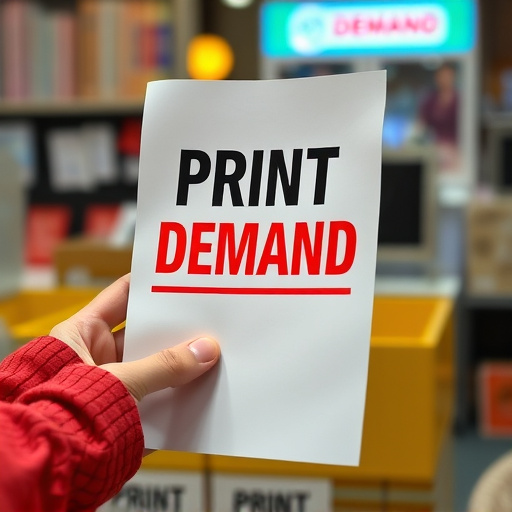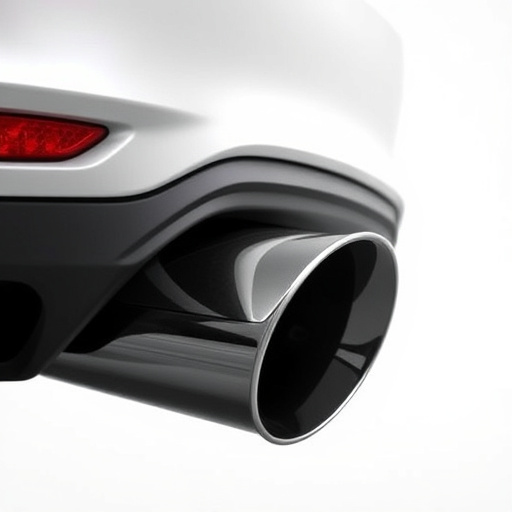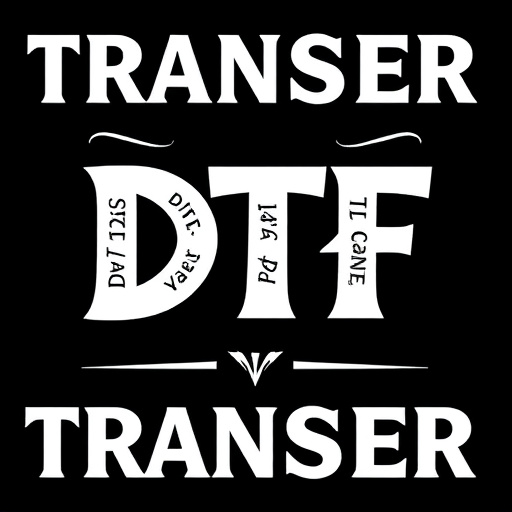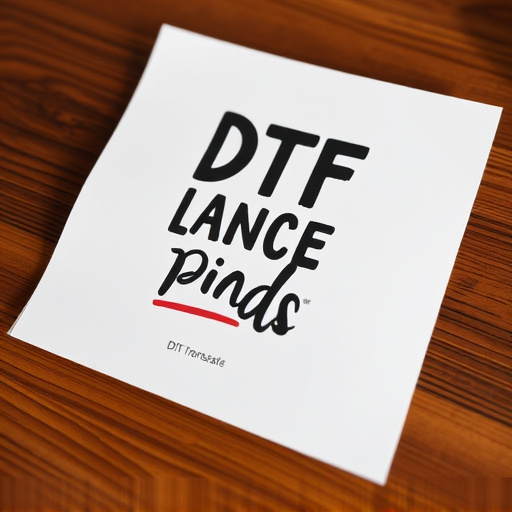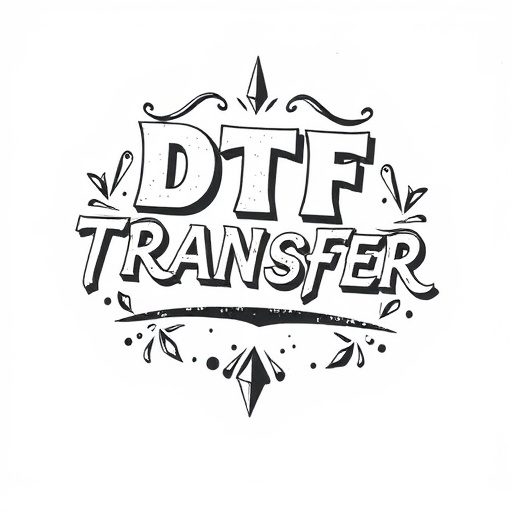Direct-to-Film (DTF) transfer is a cutting-edge process that transforms digital art into vibrant film prints. It involves exposing high-res images onto light-sensitive film, creating negatives for printing on various media. DTF offers precision in recreating textures and colors from intricate line art to full-color illustrations. The technology has revolutionized creative expression, enabling artists to reach global audiences. Choosing the right materials is critical for crisp prints; this includes suitable paper and compatible inks. The process involves digital art preparation, exposure using UV/laser tech, development, and finally, creating positive DTF prints. Detailed Thermal Transfer (DTF) technology is a game-changer across industries, offering unparalleled precision in various applications like fashion, textiles, and signage. Meticulous preparation, including high-res artwork and premium materials, ensures successful DTF transfer projects.
Discover the captivating art of transforming detailed illustrations and designs into tangible film transfers with DTF (Direct to Film) printing. This innovative process combines traditional artistry with modern technology, enabling creators to bring their visions to life on various media. From understanding the DTF transfer process to exploring its diverse applications in industries like fashion, art, and decor, this article offers a comprehensive guide. Learn about materials, techniques, best practices, and more to unlock the potential of DTF prints.
- Understanding DTF Transfer: A Process Overview
- The Magic of Transforming Illustrations to Film
- Choosing the Right Materials for DTF Printing
- Techniques and Tools for Creating High-Quality DTF Prints
- Applications of DTF Transfers in Various Industries
- Tips and Best Practices for Successful DTF Printing Projects
Understanding DTF Transfer: A Process Overview
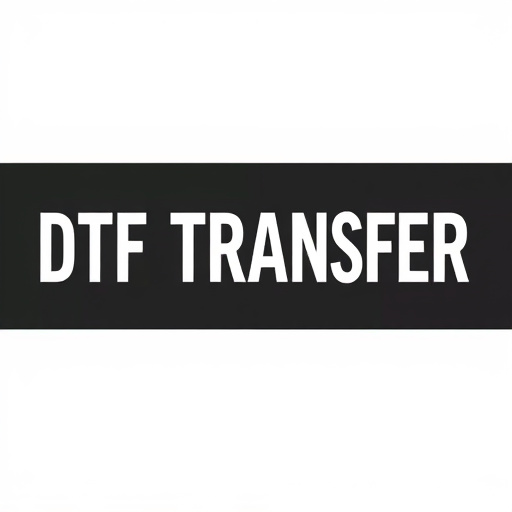
The DTF (Direct-to-Film) transfer process is a cutting-edge technique that revolutionizes the way detailed illustrations and intricate designs are brought to life on film, paving the way for stunning DTF prints. This innovative method involves directly exposing high-resolution images onto film stock, eliminating the need for traditional printing methods. By harnessing the power of modern technology, artists and printers can achieve remarkable results, preserving every nuance and texture from the original design.
In the DTF transfer process, a light-sensitive emulsion is coated onto transparent film, creating a flexible and durable surface. The artwork or illustration is then digitally printed onto this film using specialized equipment, ensuring precise color reproduction and sharp details. After exposure to controlled light, the unexposed areas of the emulsion remain soluble, allowing for easy development and removal, leaving behind a negative image of the original design on the film. This negative can then be used to create positive prints, offering a versatile and efficient method for large-scale production while maintaining exceptional quality.
The Magic of Transforming Illustrations to Film

The process of transforming detailed illustrations and designs into film transfers, often referred to as DTF (Direct to Film) Transfer or DTF Printing, is a magical art that brings static visuals to life in a captivating manner. It involves the precise recreation of an illustration’s nuances, textures, and colors on a transparent film, creating a negative that can then be used for printing on various media. This technique is particularly enchanting as it allows artists and designers to preserve their creative masterpieces in a tangible, shareable format while opening doors to endless possibilities in storytelling, advertising, and artistic expression.
DTF Transfers offer a unique blend of vintage charm and modern precision. They can range from intricate line art to rich, full-color illustrations, ensuring every detail is captured with remarkable accuracy. This process has revolutionized how we think about preserving and sharing creative works, making it easier for artists to reach wider audiences and for enthusiasts to own pieces of art that tell stories or evoke emotions through their visual beauty.
Choosing the Right Materials for DTF Printing

When it comes to transforming detailed illustrations and designs into film transfers via DTF (Direct-to-Film) Printing, selecting the appropriate materials is paramount. The right choice ensures high-quality, crisp prints that truly bring artistic visions to life. Key factors in material selection include paper type, ink compatibility, and DTF printer capabilities.
For DTF Transfer, a suitable printing paper with a smooth surface and excellent dimensional stability is essential. This allows for precise ink adhesion and minimizes warping or cracking during the transfer process. Additionally, compatible inks that offer vibrant colors and fast drying times are crucial for achieving sharp details and preventing smudging. The compatibility between the chosen DTF printer and selected materials should also be thoroughly checked to ensure optimal performance and long-lasting DTF prints.
Techniques and Tools for Creating High-Quality DTF Prints

Creating high-quality Digital to Film (DTF) prints involves a blend of advanced techniques and specialized tools. The process begins with meticulous digital art preparation, ensuring the illustration or design is optimized for printing. This includes adjusting color profiles, resolution, and file formats to meet the specifications of the DTF transfer method. Tools like graphic design software and photo editing applications play a crucial role in this stage, enabling artists to fine-tune every detail.
Once prepared, the digital artwork is ready for exposure onto film. Specialized DTF printers use advanced UV or laser technology to burn the image directly onto photographic film. The precision and accuracy of these machines are paramount, as they determine the clarity and fidelity of the final print. After exposure, the film undergoes a developing process, similar to traditional photography, resulting in a negative that captures the intricate details of the original design. This negative is then used for creating positive DTF prints, offering a unique and captivating visual experience.
Applications of DTF Transfers in Various Industries

In recent years, Detailed Thermal Transfer (DTF) technology has found applications across diverse industries, revolutionizing how we reproduce and preserve intricate designs. This innovative process allows for precise replication of detailed illustrations and patterns onto various materials, opening up a world of possibilities. From fashion and textiles to signage and even fine art, DTF transfers have become a game-changer in the field of printing.
DTF printing offers unparalleled precision and quality, ensuring that complex designs are accurately transferred onto surfaces like fabrics, paper, wood, and metal. This makes it ideal for custom apparel creation, where intricate patterns can be directly applied to clothing, creating unique and personalized pieces. In addition, DTF transfers excel in signage and decoration, enabling the production of vibrant, detailed graphics for outdoor billboards, indoor displays, and decorative items. The versatility of this technology continues to expand, solidifying its place as a versatile tool across multiple sectors.
Tips and Best Practices for Successful DTF Printing Projects
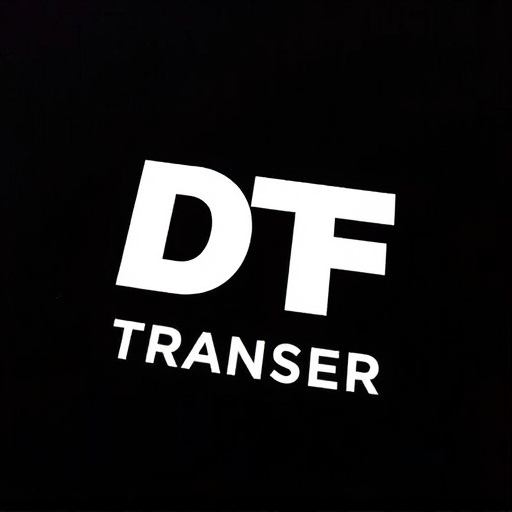
When embarking on a DTF (Direct to Film) transfer project, there are several best practices and tips that can ensure success. Firstly, prepare your artwork carefully. High-resolution digital illustrations or designs with sharp lines and detailed elements will yield the best results. Ensure your design is optimized for printing, with appropriate margins and no visible artifacts or imperfections.
For optimal DTF prints, consider using quality film and ink. Premium materials can significantly enhance the final output, providing vibrant colors and crisp details. Additionally, precise registration is crucial. When aligning your artwork to the film, take extra care to maintain exact positioning, especially for complex designs with multiple layers. This meticulous process ensures that every element of your illustration translates accurately onto the final print medium.




